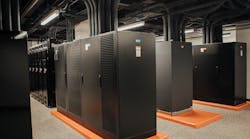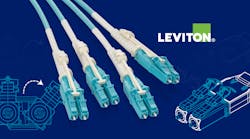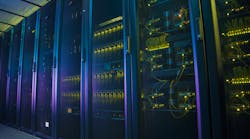Latest from Cloud Solutions/Public/Private/Hybrid
It’s So AI Cool!
AI-Based Data Center Cooling Systems for the Future
A few years ago, people believed that data center cooling would soon be a dead-end business since computers and chips are getting smarter and smaller and demand less and less power. But the reality is quite different.
Today, data center cooling is one of the more discussed topics in the industry. The rising demand for data centers and the growing discrepancy between old data centers and new hyperscale facilities have made it a critical topic. As data centers have proliferated, cooling and power utilization have become vital requirements for the future.
Why is data center cooling so vital?
It is no secret that data centers consume a tremendous amount of electricity across the world. Furthermore, this consumption will only increase in the future as cloud services, IoT, edge computing, artificial intelligence, and other digital transformation technologies become an instrumental part of people’s lives. Further improvements in these technologies will demand more computing and storage to meet business demands. Thus, its crucial to invest in data center cooling to minimize energy consumption and overall IT expenses.
“Google developed AI for data center cooling. This cooling solution uses multiple sensors that collect data every five minutes, and the AI-based algorithm predicts how the cooling system’s performance will affect energy consumption. For now, AI is an optimum solution for data center cooling.”
In fact, the high cost of cooling data centers is one of the prime reasons why companies prefer on-premise data centers and show an inclination toward colocation. However, at this time, data centers are quite ineffective when it comes to cooling IT infrastructure as they lack appropriate monitoring and response capabilities.
Needless to say, a poorly air-conditioned data center can result in excessive heat, which puts stress on services, networking hardware, and storage devices. Moreover, increased heat leads to downtime, shorter life of equipment, and permanent damage to critical, expensive components. In short, poor air conditioning leads to increased capital investment and maintenance expenses. If this is not enough, the lack of proper air conditioning increases power costs and negatively impacts IT cost-control.
According to Allied Market Research, the global data center cooling market is expected to reach $27.30 million by 2027, growing at a CAGR of 12.8% from 2020 to 2027. Clearly, the increase in the number of data centers and rise in desire to minimize overall IT costs have boosted its market growth.
Liquid Cooling
Usually, data centers depend on air cooling to maintain an optimum speed of computing and meet the basic storage and networking conditions. However, this practice is not environmentally friendly and efficient. As the demand for data centers increases, there is a dire need for a highly dense solution that works better than common air cooling.
For some experts, that means liquid cooling is the way to go. What is liquid cooling? It is a technique that has been implemented to overcome the limitations of air cooling. While there are many methods of liquid cooling, three methods are widely used for cooling data centers:
- Immersive cooling refers to the full system being immersed in non-conductive liquid so that any generated heat can be removed through heat exchangers.
- A rear door heat exchanger (RDHx) means the rear door the data rack contains both fans and liquid. They combine to exhaust and cool the hot air developed within the rack.
- Direct to chip cooling refers to chilled liquid being pumped into the server chassis using minute tubes. This liquid goes directly onto cold plates and any warm liquid generated is pumped to a unit that can cool down the warmer liquid. This cycle continually repeats. Some experts believe this method could entirely replace traditional air-cooling systems over time.
Any one of these methods can be used as its efficiency varies from case to case. However, compared to the air-cooling system, the liquid cooling approach makes a more significant impact to maintain the latest generation of GPUs and CPUs within ambient operating temperatures.
Google developed AI for data center cooling. The company is the leader in this innovation in the data center market. The innovative cooling solution uses multiple sensors that collect data every five minutes, and the AI-based algorithm predicts how the cooling system’s performance will affect energy consumption. For now, AI is an optimum solution for data center cooling. It can predict the performance of the cooling system in the future, which allows operators to take necessary steps to eliminate failure risks, reduce overall IT costs, and improve the cooling system’s performance.
“Moreover, increased heat leads to downtime, shorter life of equipment, and permanent damage to critical, expensive components. In short, poor air conditioning leads to increased capital investment and maintenance expenses.”
In the future, power and cooling efficiency will continue to be a headache for data centers. The next-generation technologies and processors for AI and machine learning will demand massive energy and lead to a substantial amount of heat generation.
For now, liquid cooling seems the most affordable cooling solution for now. But as direct-to-chip cooling moves to the hardware manufacturer level, it’s expected those will become more effective. Furthermore, changes in rack and containment products such as self-contained racks, will help mitigate the issue of heat management.
Having said that, the future of data centers lies with edge infrastructure and hyperscale data centers, which have different demands for maintaining temperature. In some cases, data centers can demand fan walls. Thus, there will not be a one-size-fits-all solution when it comes to data center cooling.
ABOUT THE AUTHOR
Swamini Kulkarni is a content writer at Allied Market Research. She holds a bachelor’s degree in Instrumentation and control engineering from Pune University. For more information, please email [email protected] or visit https://www.alliedmarketresearch.com/. Follow her on Twitter: https://twitter.com/swaminik23 and LinkedIn: https://www.linkedin.com/in/swaminikulkarni/.
Company Social Media Handles:
https://www.facebook.com/alliedmarketresearch
https://www.youtube.com/user/alliedmarketresearch
https://www.linkedin.com/company/allied-market-research

Swamini Kulkarni | Content Writer, Allied Market Research
Swamini Kulkarni is a content writer at Allied Market Research. She holds a bachelor’s degree in Instrumentation and control engineering from Pune University. For more information, please email [email protected] or visit https://www.alliedmarketresearch.com/. Follow her on Twitter: https://twitter.com/swaminik23 and LinkedIn: https://www.linkedin.com/in/swaminikulkarni/.
Company Social Media Handles:
https://www.facebook.com/alliedmarketresearch
https://www.youtube.com/user/alliedmarketresearch
https://www.linkedin.com/company/allied-market-research






